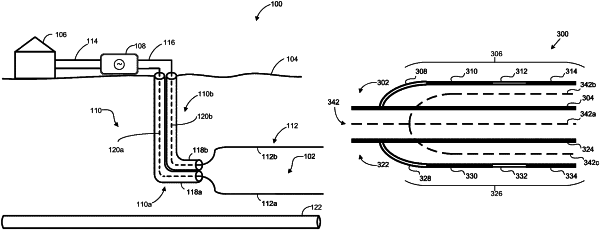| CPC H05B 6/62 (2013.01) [E21B 43/2401 (2013.01); H05B 6/52 (2013.01); H05B 2214/03 (2013.01)] | 20 Claims |

|
11. A method for electromagnetically heating an underground hydrocarbon formation, the method comprising:
(a) providing at least one electromagnetic power source for generating a time-varying current or a time-varying voltage;
(b) positioning at least two transmission line conductors in the hydrocarbon formation, at least one of the transmission line conductors comprise a primary arm and at least one secondary arm branching from the primary arm, at least a portion of the at least one secondary arm being electrically isolatable;
(c) positioning at least a portion of a producer well laterally between the transmission line conductors and at a greater depth underground than at least one of the transmission line conductors to receive heated hydrocarbons from the hydrocarbon formation via gravity, the producer well having a length that defines a longitudinal axis, at least a portion of each of the transmission line conductors extend along the longitudinal axis;
(d) providing at least one waveguide, each of the at least one waveguide having a proximal end and a distal end;
(e) connecting the at least one proximal end of the at least one waveguide to the at least one electromagnetic power source;
(f) connecting the at least one distal end of the at least one waveguide to at least one of the transmission line conductors;
(g) using the at least one electromagnetic power source to generate the time-varying current or the time-varying voltage; and
(h) applying the time-varying current or the time-varying voltage to excite the transmission line conductors, the excitation of the transmission line conductors being capable of propagating an electromagnetic wave within the hydrocarbon formation and generating an electromagnetic field.
|